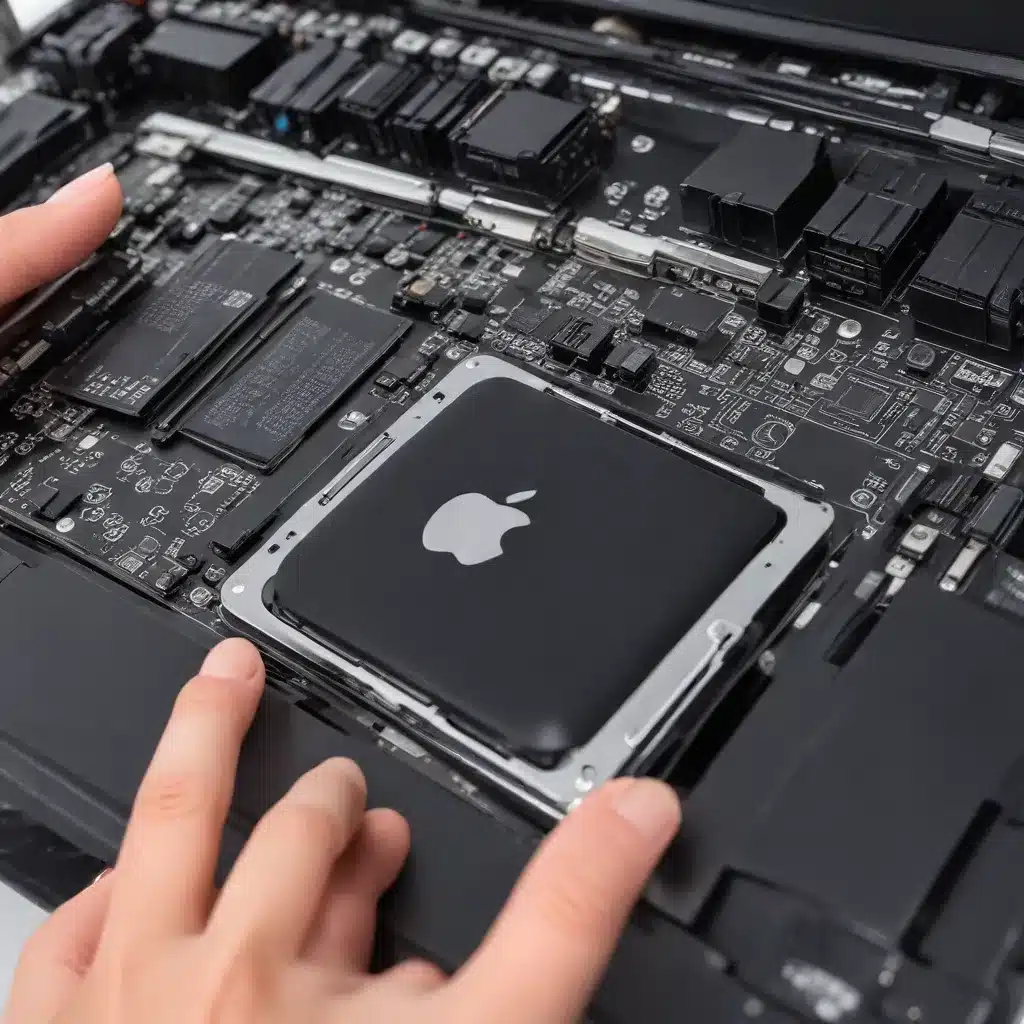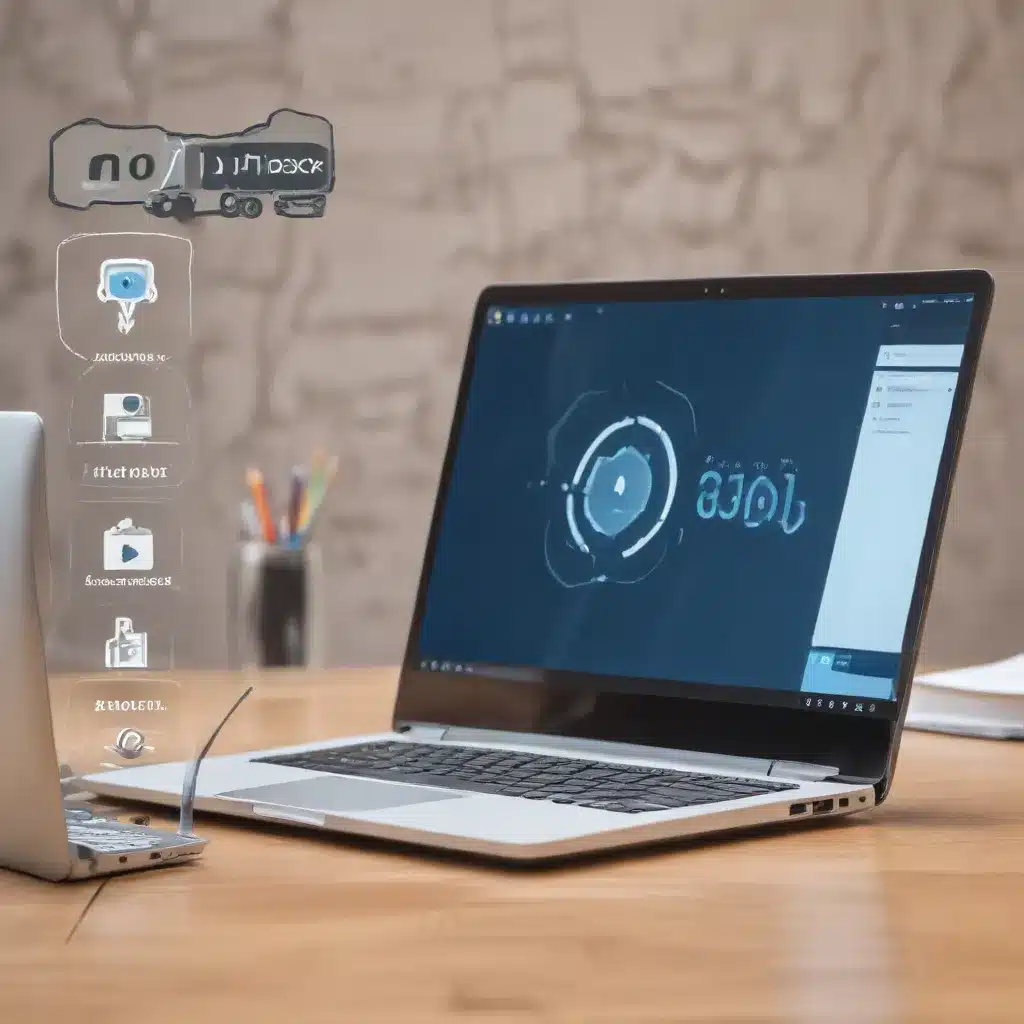Understanding Apple’s Self-Service Repair Program
As an experienced IT specialist, I’ve had the opportunity to delve into the world of Apple device repairs over the years. One of the most significant developments in this realm has been the introduction of Apple’s Self-Service Repair program, which aims to empower individuals with the knowledge and tools to tackle various out-of-warranty repairs on their own.
The Self-Service Repair program is designed for those of us who have a deep understanding of the intricacies involved in repairing electronic devices. It provides access to genuine Apple parts, specialized tools, and comprehensive repair manuals to guide us through a variety of repairs, from display replacements to addressing power and startup issues.
Navigating the Self-Service Repair Process
To get started with a self-repair, the first step is to familiarize yourself with the repair manual for your specific Apple device, be it an iPhone, Mac laptop, or Mac desktop. These manuals, available on the Self Service Repair website, offer detailed step-by-step instructions, accompanied by exploded views and lists of the necessary parts and tools.
Once you’ve reviewed the repair manual and determined the parts you’ll need, the next step is to purchase genuine Apple components from the Self Service Repair Store. It’s important to note that these parts are specifically engineered and tested to ensure the highest quality, integrity, and reliability for your Apple device.
In addition to the parts, you’ll also have the option to rent or purchase the professional-grade tools designed by Apple for safe and reliable repairs. These tools are the same ones used by Apple Authorized Service Providers, ensuring a consistent and effective repair experience.
Maintaining Cybersecurity during Self-Repairs
As we delve into the world of self-repairs, it’s crucial to keep cybersecurity at the forefront of our minds. Breaching the integrity of an Apple device can potentially expose it to various security vulnerabilities, which is why it’s essential to follow the repair instructions meticulously and ensure that any software tools or configuration steps recommended in the repair manual are properly implemented.
One of the key cybersecurity measures to consider is the importance of returning used or damaged parts to Apple. This not only allows for responsible recycling or refurbishment but also helps maintain the overall security and integrity of the device. In some cases, you may even be eligible for credit when returning certain replaced parts, further incentivizing this responsible approach.
Troubleshooting and Resolving Common Mac Issues
Beyond the Self-Service Repair program, it’s essential for IT professionals and tech enthusiasts to have a comprehensive understanding of the common issues that Mac users may encounter and the effective strategies for resolving them.
Addressing Display and Image Concerns
One of the most frequent issues Mac users face is related to display and image problems. This can range from discoloration and brightness variations to complete screen failures. By delving into the repair manual’s section on display-related concerns, we can learn how to properly diagnose and address these issues, whether it’s a matter of calibrating the display, replacing the camera or ambient light sensor, or even addressing more complex display and image-related problems.
Tackling Power and Startup Challenges
Another common area of concern for Mac users is power-related issues, including battery and power adapter problems, as well as startup difficulties. The repair manual’s guidance on these topics can be invaluable, equipping us with the knowledge to identify the root cause of the issue, be it a faulty battery management unit (BMU), an intermittent shutdown, or a persistent startup problem.
Optimizing Sound and Connectivity
A well-functioning Mac should also provide a seamless audio experience, with clear microphone input and robust speaker or headphone performance. The repair manual’s sections on sound-related issues can help us troubleshoot problems like microphone failures or speaker/headphone jack malfunctions. Additionally, we can learn how to address connectivity concerns, such as Bluetooth or Wi-Fi connectivity hiccups, USB-C, Thunderbolt, and HDMI issues.
Enhancing Mechanical Performance
Beyond the electronic and software-related aspects of Mac maintenance, there are also mechanical considerations to keep in mind. The repair manual provides valuable insights into addressing concerns like unusual temperatures, odors, or excessive noise, hum, or vibration emanating from the device. By understanding the underlying causes and the steps required to address these mechanical challenges, we can ensure the longevity and optimal performance of our Mac devices.
Embracing Technological Advancements in the IT Industry
As IT professionals and tech enthusiasts, we have a front-row seat to the ever-evolving landscape of the IT industry, where technological advancements are constantly reshaping the way we interact with and maintain our devices. One such significant development is the introduction of Apple Intelligence, a powerful AI-driven tool that has the potential to revolutionize the way we approach computer repair and maintenance.
Harnessing the Power of Apple Intelligence
Apple Intelligence, now available on iPhone, iPad, and Mac, is a game-changer in the world of IT support. By leveraging advanced artificial intelligence and machine learning algorithms, this tool can provide users with a deeper understanding of their device’s health, identify potential issues before they escalate, and even offer personalized recommendations for optimizing performance and security.
As IT professionals, we can leverage Apple Intelligence to streamline our troubleshooting efforts, gain valuable insights into the underlying causes of problems, and proactively address issues before they disrupt our clients’ workflows. This level of predictive maintenance and intelligent diagnostics can significantly enhance our efficiency and the overall quality of the support we provide.
Embracing the Future of IT Maintenance
The introduction of Apple’s Self-Service Repair program, coupled with the power of Apple Intelligence, underscores the company’s commitment to empowering users and IT professionals alike to take a more active role in the maintenance and repair of their devices. This shift towards greater transparency and accessibility in the IT industry is a testament to the evolving needs and expectations of both individual consumers and business users.
As we look to the future, it’s clear that the IT landscape will continue to undergo transformative changes, with advancements in areas like artificial intelligence, machine learning, and even augmented reality playing a pivotal role in the way we approach computer maintenance and support. By staying informed, embracing these technological innovations, and continuously expanding our knowledge and skill set, we can position ourselves as indispensable IT experts, capable of providing exceptional service and ensuring the optimal performance and security of our clients’ devices.
Navigating the IT Industry: Tips for Professionals and Users
Whether you’re an IT professional or a tech-savvy user, navigating the ever-changing landscape of the IT industry can be a daunting task. However, by arming ourselves with the right knowledge, tools, and best practices, we can overcome these challenges and ensure the smooth operation of our devices and the overall efficiency of our IT infrastructure.
Fostering a Proactive Approach to IT Maintenance
One of the key principles we should embrace is the importance of proactive maintenance and troubleshooting. Rather than waiting for problems to arise, we should actively monitor our systems, stay informed about the latest updates and security patches, and implement preventive measures to mitigate potential issues before they disrupt our workflows.
This proactive approach not only helps us maintain the integrity and performance of our devices but also enhances our overall cybersecurity posture. By staying vigilant and addressing problems before they escalate, we can minimize the risk of data breaches, system failures, and other costly disruptions.
Embracing Continuous Learning and Skill Development
The IT industry is a constantly evolving landscape, and to remain competitive and effective, we must continuously invest in our own professional development. This means staying up-to-date with the latest technologies, trends, and best practices, as well as expanding our skillset to include emerging areas like artificial intelligence, cloud computing, and cybersecurity.
By embracing a culture of continuous learning, we can not only enhance our ability to provide exceptional support to our clients or users but also position ourselves as valuable assets in the ever-changing IT industry. This commitment to self-improvement can open up new career opportunities, allow us to tackle more complex challenges, and ultimately, position us as trusted experts in the field.
Fostering Collaboration and Knowledge Sharing
In the IT industry, no one person or organization has all the answers. By fostering a collaborative mindset and actively engaging in knowledge-sharing, we can leverage the collective expertise of our peers, industry professionals, and even the wider user community.
Participate in online forums, attend industry events, and connect with like-minded individuals to exchange insights, troubleshoot complex issues, and stay informed about the latest developments in the field. This collaborative approach not only helps us grow our own knowledge but also contributes to the overall advancement of the IT industry, as we collectively work towards improving the user experience and enhancing the security and reliability of our systems.
Prioritizing Customer Service and User Experience
At the heart of our role as IT professionals lies the responsibility of providing exceptional customer service and ensuring a positive user experience. Whether we’re working with individual clients or supporting a large-scale enterprise, our ability to listen, understand, and address the unique needs and concerns of our users is paramount.
By adopting a user-centric mindset, we can tailor our support, troubleshooting, and maintenance strategies to meet the specific requirements of our clients or users. This not only fosters stronger relationships and builds trust but also helps us identify areas for improvement, streamline our processes, and ultimately, deliver a level of service that exceeds expectations.
Conclusion: Embracing the Future of IT Maintenance
As we navigate the ever-evolving world of computer maintenance and IT support, it’s clear that the future holds exciting possibilities. From the empowerment of users through Apple’s Self-Service Repair program to the transformative potential of AI-driven tools like Apple Intelligence, the IT industry is undergoing a profound transformation.
By embracing these technological advancements, fostering a culture of continuous learning and collaboration, and prioritizing exceptional customer service, we can position ourselves as the go-to experts in the field of IT maintenance and support. Together, let’s embark on this journey of discovery, mastering the art of Mac repairs and cementing our role as indispensable partners in the dynamic world of IT.
Visit ITFix.org.uk to explore more insights and best practices from experienced IT professionals and stay at the forefront of the industry’s evolution.













